Mastering RTOS for Embedded Systems: A Developer's Guide
Category: Embedded Systems
Unlocking the Power of Real-Time Operating Systems (RTOS) for Embedded Projects
If you're passionate about pushing your Raspberry Pi or microcontroller projects to the next level, understanding real-time operating systems (RTOS) is a game-changer. Whether you program in Python, C, or C++, and whether you’re developing embedded systems for hobbyist or professional applications, getting a solid grasp of RTOS helps you tackle timing-critical tasks efficiently. You’ve likely experienced challenges with managing multiple processes or ensuring your system reacts predictably under strict timing constraints. This blog post is crafted for tech enthusiasts and embedded developers like you who want clear, practical insights into RTOS—beyond generic definitions—to help you design robust, responsive embedded applications. We’ll uncover what RTOS truly means in the embedded world, examine popular RTOS options, explore how to integrate them into your projects, and provide essential programming tips. Unlike broad tutorials, this guide focuses on real-world embedded use cases and development techniques that fit Raspberry Pi and microcontroller environments. By the end, you’ll have a confident roadmap for selecting and implementing RTOS solutions tailored to your projects’ real-time needs. Dive in to elevate your embedded system design with a structured, developer-centric perspective on RTOS.
- Unlocking the Power of Real-Time Operating Systems (RTOS) for Embedded Projects
- What is an RTOS? Understanding the Core Concepts and Terminology
- Why Use an RTOS in Embedded Projects? Advantages Over Bare-Metal and Traditional OSes
- Types of Real-Time Operating Systems and Their Classifications
- Popular RTOS Choices for Raspberry Pi and Microcontrollers
- How to Choose the Right RTOS for Your Embedded Project
- Programming Basics: Task Management, Synchronization, and Inter-Task Communication in RTOS
- Integrating an RTOS Into Your Raspberry Pi or Microcontroller Workflow
- Real-World Examples: Implementing RTOS in Sensor Data Acquisition and Control Systems
- Common Pitfalls When Working with RTOS and How to Avoid Them
- Future Trends in Embedded RTOS: Security Features, IoT Integration, and Multicore Processing Capabilities
What is an RTOS? Understanding the Core Concepts and Terminology
At its core, a Real-Time Operating System (RTOS) is a specialized operating system designed to manage hardware resources, run applications, and process data in real-time environments where timing predictability is critical. Unlike general-purpose operating systems (GPOS) like Linux or Windows, an RTOS guarantees that high-priority tasks execute within strict, deterministic time constraints, making it ideal for embedded systems such as those built with Raspberry Pi or microcontrollers.
Key Concepts of an RTOS
To fully appreciate how an RTOS empowers embedded development, it’s essential to understand several foundational concepts:
-
Multitasking
RTOS enables running multiple tasks or threads seemingly simultaneously by efficiently sharing the CPU. This multitasking ability is crucial for embedded applications that must handle sensor readings, communication, and control logic concurrently without missing deadlines. -
Determinism
One of the defining characteristics of an RTOS is deterministic behavior—the system’s ability to respond predictably to events within a known time frame. This means you can calculate the worst-case execution time (WCET) for tasks, ensuring your embedded system meets strict timing requirements consistently. -
Real-Time Scheduling
Scheduling algorithms in an RTOS prioritize tasks based on urgency and timing constraints. Common strategies include: - Preemptive Scheduling, where higher priority tasks interrupt lower priority ones to meet deadlines.
- Priority-based Scheduling, which assigns fixed priorities to tasks to control execution order.
-
Time Slicing, where CPU time is divided among tasks in slices, useful mostly in soft real-time systems.
-
Task Synchronization and Communication
An RTOS provides mechanisms—such as semaphores, mutexes, and message queues—to coordinate tasks safely, preventing resource conflicts and data corruption in environments where multiple processes interact frequently.
Together, these core elements make RTOS ideal for embedded projects demanding reliability, timely responses, and efficient resource management. Whether you're designing a sensor-driven automation system, robotics controller, or real-time data logger, mastering these concepts is essential to leveraging an RTOS’s full potential.
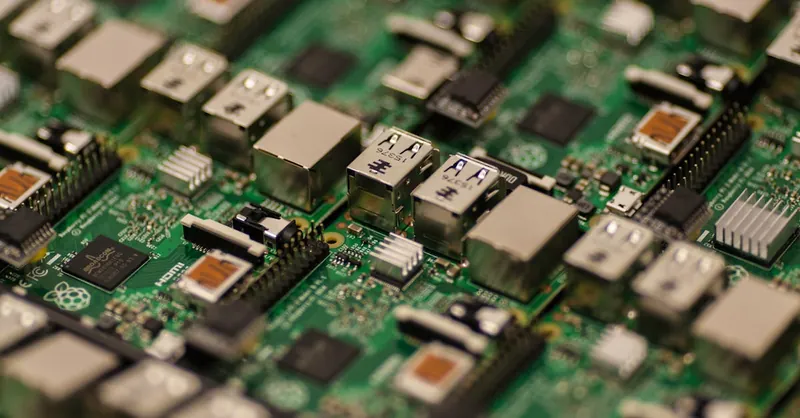
Image courtesy of Craig Dennis
Why Use an RTOS in Embedded Projects? Advantages Over Bare-Metal and Traditional OSes
When developing embedded systems—whether on a Raspberry Pi or a microcontroller—choosing between a bare-metal approach, a traditional operating system, or an RTOS is critical to meet your project’s requirements. An RTOS offers distinct advantages in handling timing-critical applications where predictability and reliability cannot be compromised.
Predictability and Deterministic Behavior
Unlike bare-metal systems that run a single loop or interrupt-driven code without formal scheduling, an RTOS ensures deterministic execution by guaranteeing that high-priority tasks receive CPU time precisely when needed. This predictable timing is essential for applications such as motor control, real-time data acquisition, or sensor fusion, where missing a deadline can lead to system failure or inaccurate results.
Task Prioritization and Efficient Multitasking
RTOS environments enable sophisticated task prioritization, allowing critical operations to preempt less time-sensitive tasks seamlessly. This means you can run multiple concurrent processes—like communication protocols, user interface updates, and sensor monitoring—without blocking or delaying mission-critical functions. In contrast, a traditional OS often uses time-sharing without strict priority enforcement, which may lead to unpredictable delays.
Advanced Resource Management
An RTOS provides built-in resource management mechanisms including semaphores, mutexes, and message queues to coordinate access to shared hardware and software resources. This synchronization prevents race conditions and data corruption that are common pitfalls in bare-metal designs or general-purpose OSes lacking real-time capabilities.
Enhanced Reliability for Timing-Critical Applications
For embedded projects that require consistent response times and fault tolerance, an RTOS offers superior reliability compared to traditional OSes. It reduces jitter and latency, maintaining tight control over task execution even under heavy system load or interrupt storms. This capability is crucial in safety-critical domains like industrial automation, medical devices, and aerospace projects.
By leveraging these advantages, using an RTOS in your embedded system ensures your application runs with the strict timing, resource control, and robustness demanded by real-world, time-sensitive scenarios.

Image courtesy of Pixabay
Types of Real-Time Operating Systems and Their Classifications
Choosing the right RTOS type is crucial for embedded projects, as it directly impacts system performance and response predictability. Real-time operating systems are primarily classified based on their timing guarantees and scheduling strategies, which include hard vs soft real-time systems, priority-based scheduling, and multitasking approaches like preemptive vs cooperative multitasking. Understanding these categories helps you tailor your embedded applications on Raspberry Pi or microcontrollers to meet precise timing and reliability requirements.
Hard vs Soft Real-Time Systems
-
Hard Real-Time Systems
These systems demand that critical tasks meet strict deadlines without exception. Failure to execute a task within its deadline can lead to catastrophic consequences, such as system crashes or safety hazards. Examples include automotive airbag controllers, industrial robotic arms, and medical device monitors. Hard real-time RTOS guarantee absolute worst-case execution times (WCET), making them indispensable for safety-critical embedded projects. -
Soft Real-Time Systems
Soft real-time systems require timely task execution but can tolerate occasional deadline misses without catastrophic failure. The focus here is on optimizing average response times rather than enforcing strict deadlines. Examples include multimedia streaming on embedded devices and user interface updates on Raspberry Pi projects. Soft real-time RTOS prioritize responsiveness but trade off some predictability to improve overall system throughput.
Priority-Based Scheduling
An essential feature of most RTOS implementations is priority-based scheduling, where each task is assigned a priority level determining the order of execution. Higher priority tasks preempt lower priority ones to ensure critical operations run promptly. Priority schemes can be:
- Static priority, assigned at design time and unchanging during runtime.
- Dynamic priority, which can adjust based on system behavior or task aging to avoid starvation.
This scheduling model ensures real-time responsiveness, especially in complex embedded systems juggling sensor readings, communication protocols, and control loops simultaneously.
Preemptive vs Cooperative Multitasking
Understanding multitasking models in RTOS is key to optimizing system responsiveness and complexity:
-
Preemptive Multitasking
In this mode, the RTOS kernel can interrupt (preempt) a running task to switch CPU control to a higher priority task immediately. This guarantees that time-critical tasks are never delayed by less important processes and is widely used in hard real-time systems. For instance, FreeRTOS on microcontrollers typically employs preemptive scheduling to meet strict timing constraints. -
Cooperative Multitasking
Here, tasks voluntarily yield control back to the scheduler, meaning a running task must complete or explicitly relinquish CPU time before other tasks run. While easier to implement and requiring less overhead, cooperative multitasking can lead to poor real-time performance if tasks do not yield promptly. It is more suitable for soft real-time or simpler embedded applications where predictability is less stringent.
By carefully selecting the appropriate RTOS classification and scheduling strategy—whether prioritizing strict deadlines or balancing responsiveness—you can design embedded systems that efficiently meet your project's real-time demands. This informed approach is especially advantageous when programming complex Raspberry Pi or microcontroller projects in Python, C, or C++, ensuring your RTOS implementation aligns perfectly with your application’s timing and reliability criteria.

Image courtesy of Pixabay
Popular RTOS Choices for Raspberry Pi and Microcontrollers
Choosing the right Real-Time Operating System (RTOS) is critical to unlocking the full potential of your Raspberry Pi or microcontroller projects. Several well-established RTOS options cater to different hardware platforms, development languages like C/C++ or Python bindings, and project requirements—from minimal footprint embedded systems to complex IoT applications. Below is an overview of the most popular RTOS choices, highlighting their key features, supported hardware, and typical use cases to help you make an informed decision.
1. FreeRTOS
FreeRTOS is arguably the most widely adopted RTOS in the embedded ecosystem, especially for microcontrollers. It is open-source, lightweight, and designed for real-time performance with minimal overhead.
- Key Features: Preemptive multitasking, priority-based scheduling, extensive task synchronization primitives (semaphores, mutexes), tickless idle mode for power saving, and a robust ecosystem including AWS integrations.
- Target Hardware: Supports a vast range of MCUs from ARM Cortex-M, ESP32, to RISC-V cores. Raspberry Pi Pico (RP2040) projects often leverage FreeRTOS for real-time extensions.
- Ideal For: Low-memory embedded systems, IoT devices, sensor controllers, and beginner-friendly projects.
2. Zephyr Project
Zephyr is a scalable, open-source RTOS backed by the Linux Foundation, designed for connected, resource-constrained devices. It offers comprehensive middleware and protocol support.
- Key Features: Modular microkernel architecture, configuration via Kconfig, extensive device drivers, built-in Bluetooth and networking stacks, and security features.
- Target Hardware: Supports a wide array of microcontrollers including ARM Cortex-M series, x86, and some experimental Raspberry Pi boards.
- Ideal For: Complex IoT applications, wearable devices, and embedded systems where connectivity and security are priorities.
3. RIOT OS
RIOT OS is a free, open-source RTOS aiming to provide a Unix-like API for embedded devices while being energy efficient and highly configurable.
- Key Features: Real-time capabilities with priority-based preemptive scheduling, full IPv6 networking stack, multi-threading support, and compatibility with various sensor platforms.
- Target Hardware: ARM Cortex-M, MSP430, AVR, and others—well suited for constrained microcontrollers and sensor networks.
- Ideal For: Wireless sensor networks, IoT applications requiring low power consumption, and academic research projects.
4. ThreadX
ThreadX is a commercial RTOS notable for its simplicity, high-performance preemptive scheduling, and minimal memory footprint, widely adopted in industrial-grade embedded systems.
- Key Features: Fast context switching, priority inheritance mutexes to avoid priority inversion, trace and debug tools, and deterministic interrupt handling.
- Target Hardware: Broad MCU support including ARM Cortex-M/R/A series and some Raspberry Pi-compatible processors via third-party ports.
- Ideal For: Safety-critical applications, real-time industrial control, and consumer electronics needing certified RTOS solutions.
5. Mbed OS
Mbed OS, developed by Arm, is an open-source RTOS optimized for IoT applications with easy-to-use APIs and cloud connectivity.
- Key Features: Rich peripheral drivers, device management, security features like PSA compliance, and built-in networking stacks for TLS, MQTT.
- Target Hardware: Primarily ARM Cortex-M microcontrollers; popular in rapid prototyping and commercial embedded devices.
- Ideal For: Internet-connected embedded systems, prototyping with rapid integration of sensors and networks, and secure IoT deployments.
Other Noteworthy RTOS Options
- NuttX: Posix-compliant, suitable for real-time embedded systems that require Unix-like capabilities.
- ChibiOS: Compact footprint with real-time preemptive scheduler; excellent for embedded applications needing small but powerful RTOS features.
- PX4: Primarily targeting drones and UAV applications with integrated real-time flight control support.
Selecting the best RTOS depends on your project's real-time constraints, hardware capabilities, programming environment, and ecosystem needs. For Raspberry Pi-based projects, combining Linux with real-time patches or exploring lightweight RTOS options for specific microcontroller co-processors often provides the flexibility and real-time determinism that embedded developers seek. Meanwhile, microcontroller-centric RTOS like FreeRTOS and Zephyr remain top choices for balancing ease of use, community support, and robust real-time performance in diverse embedded applications.
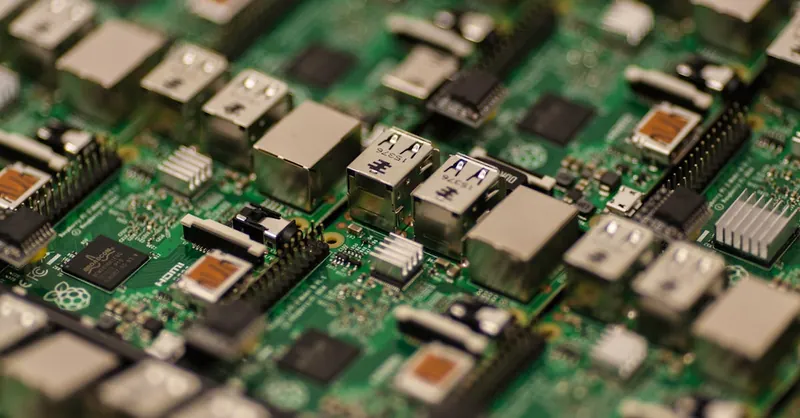
Image courtesy of Craig Dennis
How to Choose the Right RTOS for Your Embedded Project
Selecting the ideal Real-Time Operating System (RTOS) for your embedded project on Raspberry Pi or microcontrollers requires a strategic evaluation of several critical factors. Each embedded application has unique demands, from strict timing constraints to resource limitations, and choosing an RTOS aligned with these needs ensures reliable and efficient system performance.
Key Factors to Consider When Choosing an RTOS
-
Licensing Model
The RTOS license directly impacts your project's flexibility and cost. Popular options like FreeRTOS and Zephyr offer permissive open-source licenses (MIT, Apache 2.0) suitable for commercial and hobbyist projects without heavy legal constraints. Conversely, commercial RTOS such as ThreadX include proprietary licenses, offering professional-grade support and certifications but at a higher cost. Evaluating license terms early helps avoid future compliance issues. -
Footprint and Resource Usage
Embedded systems often operate under stringent memory and storage limitations. Choosing an RTOS with a small memory footprint—both in RAM and flash—is essential for microcontrollers with limited resources. For instance, FreeRTOS typically requires just a few kilobytes of RAM, making it ideal for low-power, resource-constrained devices, whereas some advanced RTOS with rich feature sets may demand more memory. -
Processor Compatibility
RTOS support for your target hardware platform is a non-negotiable aspect. Verify that the RTOS you select supports your microcontroller’s architecture, whether it's ARM Cortex-M, RISC-V, ESP32, or the Raspberry Pi’s SoC variants. Additionally, examine the availability of board support packages (BSP) or hardware abstraction layers (HAL) to accelerate development. -
Community and Ecosystem Support
A vibrant developer community and robust ecosystem facilitate troubleshooting, feature extensions, and long-term maintenance. Open-source RTOS like FreeRTOS and Zephyr have extensive communities, documentation, and example projects, which are invaluable for both beginners and experienced developers. Commercial RTOS often provide dedicated technical support and professional services. -
Programming Language and Development Tools
Most embedded projects utilize C or C++ for RTOS development due to performance and hardware control requirements; thus, ensuring your chosen RTOS fully supports these languages and offers integration with your preferred IDE and debugging tools is vital. Some RTOS projects also provide Python bindings or scripting support, which can expedite prototyping on platforms like Raspberry Pi. -
Real-Time Performance and Determinism
Assess the RTOS’s scheduling model, interrupt latency, and worst-case execution times (WCET) to confirm that it meets your project’s real-time responsiveness requirements. Hard real-time applications necessitate strict deadline guarantees, often favoring RTOS with preemptive priority scheduling and proven deterministic behavior. For softer real-time needs, you might prioritize ease of use and feature richness over absolute timing guarantees.
By carefully analyzing these factors in the context of your specific embedded application goals, you can confidently select an RTOS that balances performance, scalability, cost, and development ease—empowering you to deliver robust, real-time embedded solutions on Raspberry Pi and microcontroller platforms.
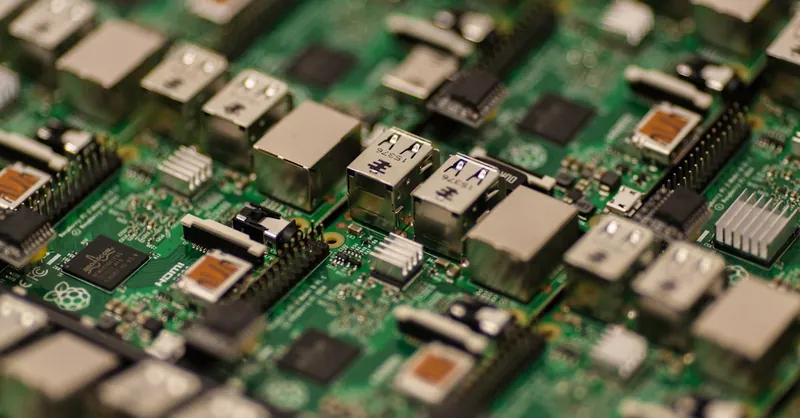
Image courtesy of Craig Dennis
Programming Basics: Task Management, Synchronization, and Inter-Task Communication in RTOS
Mastering the fundamentals of task management, synchronization, and inter-task communication is essential to fully leverage an RTOS for your embedded Raspberry Pi or microcontroller projects. These mechanisms enable your system to run multiple threads efficiently, coordinate access to shared resources safely, and exchange data accurately, ensuring deterministic behavior across complex real-time applications.
Task Management: Threads and Scheduling
At the heart of an RTOS lies the concept of a task or thread—an independent sequence of execution. Unlike bare-metal programming where a single main loop controls flow, RTOS allows you to define multiple concurrent tasks, each with its own priority and stack. The RTOS scheduler manages these threads, preempting lower-priority tasks when higher-priority tasks are ready, guaranteeing timely execution.
Here’s a simple example in C using FreeRTOS to create two tasks with different priorities:
#include "FreeRTOS.h"
#include "task.h"
void Task1(void *pvParameters) {
while(1) {
// Task1 code here
vTaskDelay(pdMS_TO_TICKS(1000)); // Delay for 1000ms
}
}
void Task2(void *pvParameters) {
while(1) {
// Task2 code here
vTaskDelay(pdMS_TO_TICKS(500)); // Delay for 500ms
}
}
int main() {
xTaskCreate(Task1, "Task 1", 1000, NULL, 2, NULL);
xTaskCreate(Task2, "Task 2", 1000, NULL, 1, NULL);
vTaskStartScheduler();
while(1);
}
In this example, Task1 has a higher priority (2) than Task2 (1), so the scheduler ensures Task1 executes whenever it is ready, preempting Task2 if necessary.
Synchronization: Semaphores and Mutexes
When multiple tasks share resources like hardware peripherals or data buffers, synchronization is critical to prevent race conditions and data corruption. RTOS provides synchronization primitives:
- Semaphores act as signaling flags or counting resources. They are ideal for task coordination, such as signaling the availability of data or events.
- Mutexes (mutual exclusion objects) protect shared resources by allowing only one task to access the resource at a time, with built-in priority inheritance to prevent priority inversion.
Example of a mutex usage in C with FreeRTOS:
SemaphoreHandle_t xMutex;
void TaskA(void *pvParameters) {
while (1) {
if (xSemaphoreTake(xMutex, portMAX_DELAY) == pdTRUE) {
// Access shared resource
xSemaphoreGive(xMutex);
}
vTaskDelay(pdMS_TO_TICKS(100));
}
}
int main() {
xMutex = xSemaphoreCreateMutex();
xTaskCreate(TaskA, "TaskA", 1000, NULL, 1, NULL);
vTaskStartScheduler();
}
This mutex ensures that shared resource access by TaskA is thread-safe, avoiding data race.
Inter-Task Communication: Queues and Timers
RTOS offers elegant ways for tasks to exchange data without busy-waiting:
- Queues provide thread-safe First-In-First-Out (FIFO) buffers that enable tasks to send messages or data packets asynchronously.
- Timers allow creation of software-triggered callbacks after specified delays or periodically, facilitating timed task execution without blocking.
Here’s a brief C example of using a queue for data transfer:
QueueHandle_t xQueue;
void ProducerTask(void *pvParameters) {
int value = 0;
while (1) {
xQueueSend(xQueue, &value, portMAX_DELAY);
value++;
vTaskDelay(pdMS_TO_TICKS(500));
}
}
void ConsumerTask(void *pvParameters) {
int receivedValue;
while(1) {
if (xQueueReceive(xQueue, &receivedValue, portMAX_DELAY)) {
// Process receivedValue
}
}
}
int main() {
xQueue = xQueueCreate(10, sizeof(int));
xTaskCreate(ProducerTask, "Producer", 1000, NULL, 1, NULL);
xTaskCreate(ConsumerTask, "Consumer", 1000, NULL, 1, NULL);
vTaskStartScheduler();
}
In Python environments targeted at Raspberry Pi with RTOS-like libraries (e.g., MicroPython on microcontrollers), similar concepts like threading, locks (mutexes), and queues can be implemented using the threading and queue modules, but with careful consideration of resource constraints and real-time requirements.
By mastering task management, synchronization primitives, and inter-task communication techniques, you can harness the full power of RTOS to build responsive, reliable embedded systems. These core programming constructs keep your tasks coordinated, prevent conflicts, and ensure your real-time application meets strict performance and timing criteria.

Image courtesy of luis gomes
Integrating an RTOS Into Your Raspberry Pi or Microcontroller Workflow
Successfully incorporating a Real-Time Operating System (RTOS) into your embedded development workflow transforms how you build, flash, and debug your projects on Raspberry Pi or microcontrollers. This integration enhances your system's real-time responsiveness, multitasking capabilities, and overall robustness, but requires careful setup and best practices to maximize efficiency and reliability.
Step-by-Step RTOS Setup and Build Process
-
Select and Download Your RTOS
Begin by choosing an RTOS compatible with your hardware and project goals—such as FreeRTOS, Zephyr, or ThreadX—and download the official source or precompiled SDK from their repositories. For Raspberry Pi, consider whether you want to use an RTOS standalone on microcontroller co-processors or as a real-time extension alongside Linux. -
Configure Your Toolchain
Set up a cross-compilation toolchain tailored for your target CPU architecture (ARM Cortex-M for many microcontrollers, ARMv8 or ARMv7 for Raspberry Pi variants). Common tools include GCC ARM Embedded, ARM Compiler, or vendor-specific toolchains. Proper toolchain configuration ensures seamless compiling and linking of your RTOS application code. -
Customizing RTOS Configuration
Most RTOS platforms use configuration files or Kconfig systems (like Zephyr) to enable or disable kernel features, select drivers, and assign memory sizes. Tailor these settings to optimize resource usage and match your application’s real-time requirements. This step is critical for balancing footprint and performance. -
Develop and Build Your Application
Write your application code using the RTOS APIs—defining tasks, synchronization mechanisms, and communication interfaces as needed. Compile your application using the configured toolchain and makefiles or build systems such as CMake or Make. Utilize debugging symbols to prepare for effective troubleshooting.
Flashing the RTOS Firmware to Your Device
-
For microcontrollers, use flashing tools like OpenOCD, ST-Link Utility, or vendor IDE programmers to upload your RTOS firmware via JTAG, SWD, or USB bootloaders. Ensure your device is in the correct hardware mode to accept new firmware.
-
For Raspberry Pi, flashing depends on the chosen RTOS deployment model:
- Running an RTOS standalone on Pi Compute Module variants may require flashing custom bootloader and RTOS images onto SD cards or eMMC.
- Running RTOS on co-processors like RP2040 within the Raspberry Pi Pico involves using vendor tools like
picotoolor integrated IDEs.
Debugging Tips and Best Practices for Embedded RTOS Development
-
Leverage Hardware Debuggers and IDEs
Tools such as SEGGER J-Link, ST-Link, or CMSIS-DAP interfaces enable breakpoint setting, step execution, and real-time variable inspection. Combining these with IDEs like Visual Studio Code, Eclipse, or vendor-specific environments simplifies task-level debugging and kernel behavior monitoring. -
Use RTOS-Aware Debugging Extensions
Many debuggers support RTOS plugin integrations that expose real-time task status, queue states, and semaphore ownership during runtime. This visibility is invaluable for diagnosing priority inversion, deadlocks, or timing violations. -
Instrument Your Code with Logging and Trace Tools
Incorporate lightweight logging frameworks or tracing tools (e.g., FreeRTOS+Trace, Zephyr Tracing) to record task switches, interrupt latencies, and event sequences. Analyzing traces helps optimize scheduling and identify hidden bottlenecks. -
Implement Watchdogs and Fail-Safe Mechanisms
Enable hardware or software watchdog timers to automatically recover from task freezes or system hangs. Designing your RTOS tasks to gracefully handle errors enhances overall system reliability. -
Iterative Testing Under Real Conditions
Test your integrated RTOS application with realistic sensor inputs, communication loads, and external interrupts to ensure timing constraints are consistently met. Employ stress tests and edge-case scenarios to validate system robustness.
By carefully following these RTOS setup, build, flashing, and debugging steps, embedded developers can seamlessly integrate real-time operating systems into Raspberry Pi and microcontroller workflows. This approach unlocks powerful deterministic multitasking and resource management capabilities, enabling the creation of sophisticated, timing-critical embedded applications with predictability and resilience.
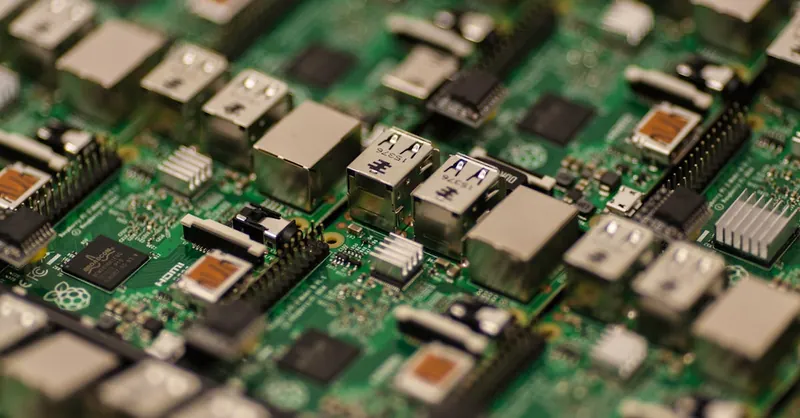
Image courtesy of Craig Dennis
Real-World Examples: Implementing RTOS in Sensor Data Acquisition and Control Systems
Harnessing an RTOS for embedded sensor data acquisition and control systems significantly enhances responsiveness and system stability, especially in applications demanding precise timing and concurrent processing. By leveraging RTOS features such as deterministic scheduling, prioritized multitasking, and robust synchronization, developers can design sensor-driven projects that reliably handle multiple real-time inputs without data loss or latency spikes.
Example 1: Multi-Sensor Environmental Monitoring System
In a typical multi-sensor setup—such as temperature, humidity, air quality, and light intensity sensors—an RTOS enables each sensor reading to run as an independent, prioritized task. For instance:
- High-priority Task: Critical sensors (e.g., gas leak detectors) are assigned the highest priority to guarantee immediate sampling and alert generation.
- Medium-priority Tasks: Periodic readings from non-critical sensors (temperature, humidity) run at lower priorities but with guaranteed response times.
- Low-priority Task: Data logging and communication with cloud servers operate asynchronously, ensuring they don't block urgent sensor processing.
Using task synchronization mechanisms like semaphores or event flags, the system coordinates sensor access efficiently, eliminating race conditions and ensuring accurate, timely data collection. The RTOS scheduler’s preemption ensures that interruptions, such as urgent sensor triggers, do not suffer delays from lower priority background tasks.
Example 2: Real-Time Motor Control with Feedback Loop
For embedded projects controlling motors based on sensor feedback (e.g., speed, position, or torque sensors), RTOS implementation is vital to maintain low-latency control loops. By assigning the sensor acquisition and control algorithms to high-priority real-time tasks, the system guarantees that feedback is processed and adjustments are applied within strict deadlines.
Key RTOS benefits in this context include:
- Deterministic Response: Ensures actuator control signals are generated within guaranteed timeframes, essential for stable motor operation.
- Task Isolation: Separates sensor reading, processing, and communication into distinct tasks, preventing delays caused by resource contention.
- Safe Resource Sharing: Mutexes protect shared hardware peripherals (like ADCs) used by multiple tasks, avoiding conflicts that could otherwise corrupt sensor data.
In DIY robotics or automation on Raspberry Pi microcontrollers, this RTOS-backed architecture results in smooth, jitter-free motion control and improved system reliability compared to bare-metal or non-real-time OS alternatives.
Incorporating an RTOS into embedded sensor and control systems not only boosts real-time responsiveness but also improves system stability, fault tolerance, and scalability. Whether you’re building environmental monitors, industrial controllers, or robotics projects, implementing RTOS-driven task management and synchronization transforms your sensor data acquisition and control mechanisms into robust, deadline-driven processes essential for high-quality embedded applications.
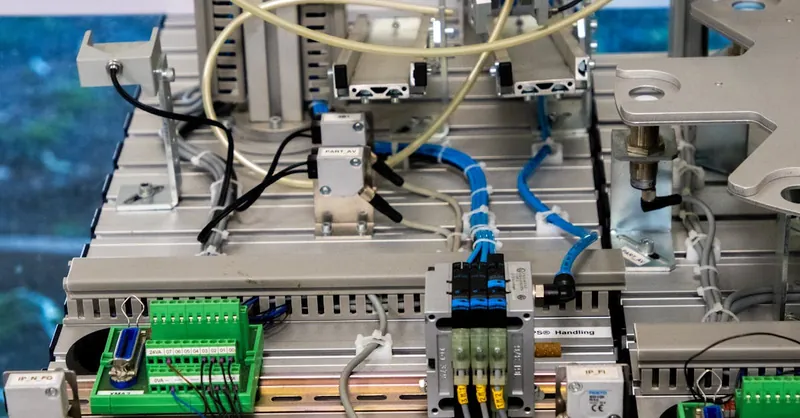
Image courtesy of Ludovic Delot
Common Pitfalls When Working with RTOS and How to Avoid Them
While integrating a Real-Time Operating System (RTOS) into your Raspberry Pi or microcontroller projects offers immense benefits, developers often encounter several common pitfalls that can undermine system performance and reliability. Understanding these challenges—such as timing issues, priority inversion, stack size misconfigurations, and the inherent debugging complexity—enables you to proactively design solutions that avoid costly delays and unexpected behavior in real-time embedded applications.
Timing Issues and Jitter
One of the most critical challenges when working with RTOS is managing timing precision. Task deadlines can be missed due to interrupt latency, improper task priorities, or inefficient scheduling configurations, causing unpredictable delays known as jitter. To minimize timing issues:
- Set appropriate task priorities to ensure that high-criticality tasks preempt lower-priority ones effectively.
- Use tickless idle modes or adjust system tick frequencies to reduce overhead and improve timer accuracy.
- Avoid long blocking calls or busy-wait loops within high-priority tasks, as these can delay lower-priority but time-sensitive tasks.
Consistent review of system timing using trace tools and real-time profiling helps detect jitter hotspots early, enabling fine-tuning of task scheduling and interrupt handling to maintain deterministic behavior.
Priority Inversion and Its Mitigation
Priority inversion occurs when a lower-priority task holds a resource needed by a higher-priority task, causing the high-priority task to wait indefinitely and jeopardizing real-time responsiveness. This is especially problematic in embedded control systems and sensor data acquisition projects.
To avoid priority inversion pitfalls:
- Utilize priority inheritance mechanisms available in most RTOS mutex implementations, ensuring the lower-priority task temporarily inherits the higher priority until it releases the resource.
- Design your system to minimize resource contention by using fine-grained mutexes or dividing shared resources.
- Carefully analyze inter-task dependencies and use deadlock detection techniques during development.
Awareness and mitigation of priority inversion are essential to preserve the integrity of your RTOS scheduling and meet strict timing guarantees.
Stack Size Mistakes and Memory Management
Incorrectly configuring stack size for tasks often leads to stack overflow errors, subtle data corruption, or system crashes—issues that can be difficult to diagnose on embedded platforms. Common causes include underestimating recursive calls, ISR nesting depth, or variable memory allocations within tasks.
Best practices to prevent stack-related problems include:
- Use RTOS-provided utilities to check task stack usage at runtime.
- Allocate sufficient stack space based on profiling and worst-case execution scenarios rather than guesswork.
- Enable stack overflow detection features where available, so faults can be caught early during development.
Efficient stack and heap size configuration not only prevents runtime failures but also optimizes limited embedded memory resources.
Debugging Complexity in RTOS Environments
Debugging an RTOS-based embedded system can appear daunting due to its multi-threaded nature, asynchronous interrupts, and complex task interactions. Traditional debugging methods may be inadequate for revealing subtle synchronization issues or timing violations.
To reduce debugging complexity:
- Employ RTOS-aware debuggers and trace analyzers that visualize task states, queue activities, and interrupt occurrences in real-time.
- Integrate logging and event tracing into your code, balancing verbosity with performance impact.
- Test incrementally, isolating individual tasks or system components before full integration to pinpoint faults systematically.
Mastering RTOS debugging tools and techniques dramatically improves development efficiency and system robustness, empowering you to resolve concurrency bugs and timing anomalies effectively.
By anticipating these common pitfalls—timing mismanagement, priority inversion, stack sizing errors, and debugging challenges—and adopting practical strategies for each, you can harness the full power of RTOS in your embedded projects. This proactive approach ensures your Raspberry Pi or microcontroller application maintains precise timing, reliable task coordination, and robust performance critical to real-time system success.
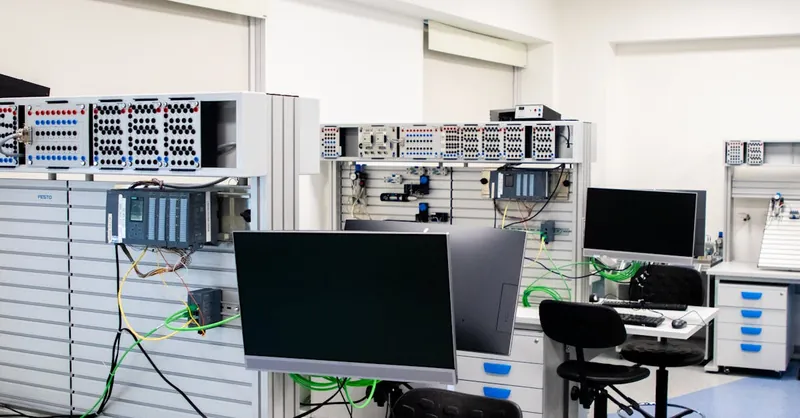
Image courtesy of Ludovic Delot
Future Trends in Embedded RTOS: Security Features, IoT Integration, and Multicore Processing Capabilities
As embedded systems evolve, emerging advancements in Real-Time Operating Systems (RTOS) are reshaping the landscape of next-generation embedded development. Understanding these future trends is crucial for developers aiming to build secure, scalable, and high-performance real-time applications on platforms like Raspberry Pi and microcontrollers.
Enhanced Security Features in RTOS
With the exponential growth of IoT devices and connected embedded systems, security in RTOS environments has become a paramount concern. Modern RTOS are integrating advanced security mechanisms to withstand increasingly sophisticated cyber threats:
- Hardware-enforced security extensions, such as ARM TrustZone and Cortex-M security features, are now supported within RTOS kernels to isolate critical code and data securely.
- RTOS vendors are adopting secure boot processes, cryptographic services, and support for industry-standard security protocols (TLS, DTLS) to ensure device integrity and encrypted communications.
- The implementation of real-time intrusion detection and secure firmware update mechanisms is enabling embedded systems to maintain resilience against attacks without sacrificing deterministic performance.
These security enhancements ensure embedded applications, especially in healthcare, industrial automation, and smart home IoT, can maintain trustworthiness in hostile environments.
Deep Integration with the Internet of Things (IoT)
RTOS portfolios are increasingly optimized to meet the demands of the IoT ecosystem, enabling seamless device connectivity, cloud integration, and efficient power management:
- Built-in lightweight networking stacks supporting IPv6, MQTT, CoAP, and Bluetooth Low Energy facilitate efficient and secure data exchange between devices and cloud platforms.
- RTOS platforms now feature energy-aware scheduling and power-saving modes tailored for battery-operated IoT endpoints, extending device longevity without compromising responsiveness.
- Enhanced support for edge computing capabilities within RTOS architectures allows processing and analytics closer to data sources, reducing latency and network congestion.
By embracing these IoT-driven capabilities, embedded developers can build distributed systems that are real-time capable, scalable, and interoperable with evolving cloud infrastructures.
Advanced Multicore and Heterogeneous Processing Support
The proliferation of multicore microcontrollers and SoCs in embedded systems is pushing RTOS designs toward supporting parallel processing and resource partitioning:
- Contemporary RTOS kernels provide symmetric multiprocessing (SMP) and asymmetric multiprocessing (AMP) support, enabling developers to run multiple tasks across cores with efficient inter-core communication.
- Features like load balancing, multicore scheduling algorithms, and memory protection units (MPU) integration enhance real-time responsiveness and system stability on complex hardware.
- Support for heterogeneous architectures—combining CPUs, DSPs, and AI accelerators—is becoming standard, empowering real-time embedded systems to handle increasingly demanding workloads such as machine learning and signal processing.
These multicore processing capabilities allow embedded RTOS to scale performance dramatically, meeting the rigorous demands of robotics, smart appliances, and industrial IoT applications.
Keeping abreast of these future trends in embedded RTOS, including robust security, tight IoT integration, and multicore processing support, equips developers to architect next-generation real-time systems. Whether prototyping with Raspberry Pi or designing complex microcontroller-driven products, leveraging these advancements ensures your embedded applications remain competitive, resilient, and ready for the demands of tomorrow’s connected world.

Image courtesy of Jakub Zerdzicki
